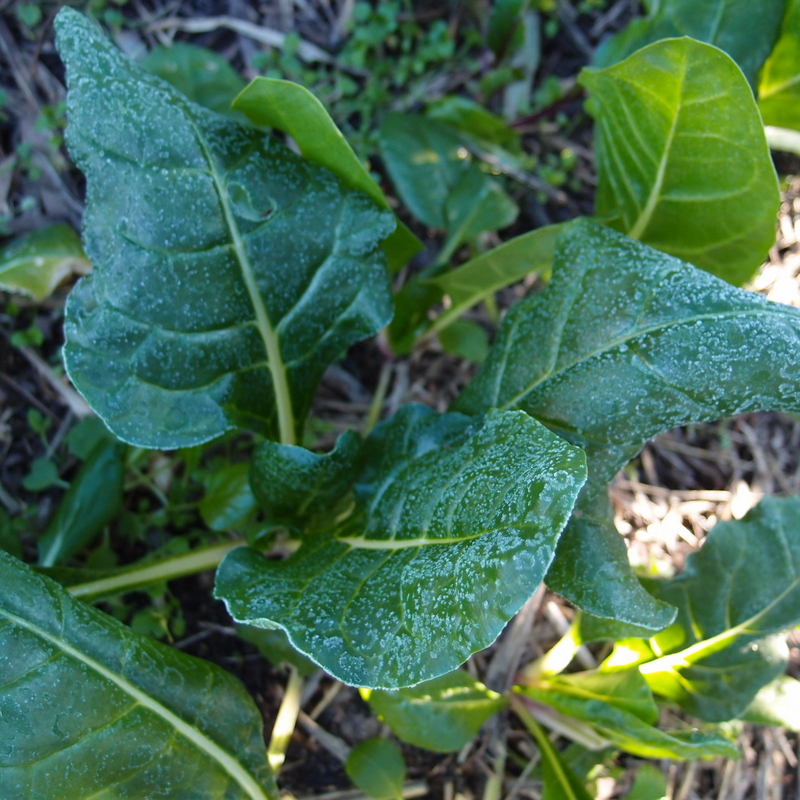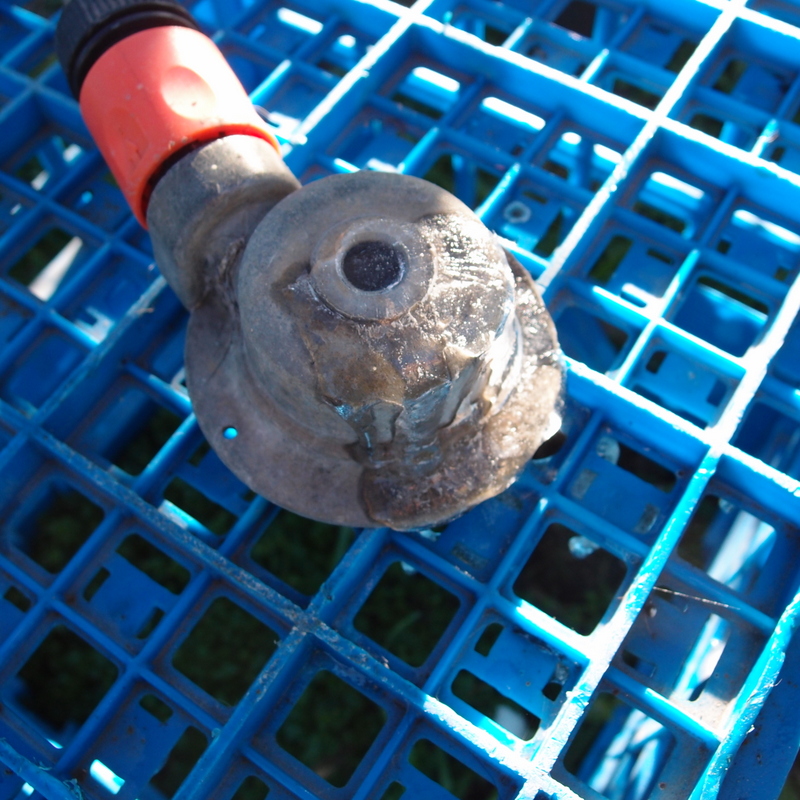People are often surprised that we get frost here in Queensland. Sure, the majority of Queensland is typically frost free, but here in the South East corner we can experience frost, with some inland areas around Charleville having 40-50 frost days on average of the last 30 years. And certainly if you live in NSW, Victoria, Tasmania, and southern parts of SA and WA, you can expect a few frost days too. See the Australia frost map here.
I know our winters aren't really cold by any means, we don't snow, in fact, we are more likely to have a beautiful sunny day after a frost, and can have a temperature increase of over 20 degC in one day! But this actually makes things trickier because we can ALMOST grow tropical plants, but it only takes one hard frost to knock them back until the weather warms up in spring. Fortunately there are a few tricks we can use to manage frost when we understand what it is and how it behaves.
Frost isn't all bad! It does kill off a number of annoying weeds and bugs, and at least I can grow veges that do like some chill time, like carrots, turnips, swedes and broadbeans, and one day soon fruit trees like apples and stonefruit (or at least I hope I can grow them!).
Do you have frost? How do you manage it?
I know our winters aren't really cold by any means, we don't snow, in fact, we are more likely to have a beautiful sunny day after a frost, and can have a temperature increase of over 20 degC in one day! But this actually makes things trickier because we can ALMOST grow tropical plants, but it only takes one hard frost to knock them back until the weather warms up in spring. Fortunately there are a few tricks we can use to manage frost when we understand what it is and how it behaves.
 |
| frost on broccoli leaves |
What is frost?
Frost is not just ambient air temperature below freezing. Frost occurs when the air temperature close to the ground cools below freezing AND below the dew point so that moisture in the air either condenses and then freezes, or freezes directly out of the air. The type of frost that we experience in a temperate or sub-tropical climate is typically caused by the land cooling overnight and cooling the air close to the ground. As cold air is denser than warm air it tends to sink and to flow downhill. This means that frost occurs lower down in the valley and can be trapped uphill of obstacles such as hedges or walls. Frost is unlikely on windy nights as the layer of cold air is disturbed. Dew point depends on temperature and humidity. More frost info here.
The important point is that we can expect cold temperatures to develop on clear still nights, but that if we understand how cold air moves and how frost forms from moisture in the air, we can take steps to prevent frost damage.
The important point is that we can expect cold temperatures to develop on clear still nights, but that if we understand how cold air moves and how frost forms from moisture in the air, we can take steps to prevent frost damage.
What happens to our gardens in a frost?
Some plants are well-adapted to frost, and some even benefit from frost conditions. Silverbeet, brassicas (broccoli, cabbage, kale etc), root crops, some lettuce, aliums (onions, garlic, leeks etc), herbs such as parsley, chervil, yarrow, mint, oregano and thyme, all survive frosts. Summer crops such as tomatoes, curcubits (squash, cucumber), capsicum, chilli, eggplant, beans, and herbs such as basil, ginger and sage, do not survive frost. Some of these will grow back when the weather warms up again, but many will be too badly damaged. Tropical plants that I try to grow, like sweet potato, rosella and paw paw also do not survive frost.
 |
| silverbeet with frosted leaves |
How can we protect the sensitive plants?
First, find out if your area is prone to frosts, when you can expect the first and last frosts of the year and how cold its going to get. Apart from checking the meteorology data you should look for some local knowledge. We get frost around our house, but our neighbour who has a house further up the hill from us hardly ever has frost and even then, always has a little frost-free pocket around the house and and water tanks just because their property is higher than ours. So you need to know if you are below the frost line (and then if you are too high, you can suffer from frosts due to altitude as well!). Properties in our area are advertised as "frost-free", but I didn't understand the significance when we were looking to buy.
Once you establish that frosts are likely, there are a few things you can do to keep your garden going through winter.
- Plant appropriate varieties and understand which vegetables are going to survive and which will need extra protection or if they are just bad choices for your location.
- Protect sensitive vegetables by planting under under cover of trees, close to water tanks or the house (which holds a little heat overnight and can prevent the temperature falling below freezing) or plant in pots that can be moved to safer ground.
- Even though this sounds bizarre, if you water at night before a frost is likely, wet soil will hold more heat and may maintain temperature above freezing (although this can backfire if it does get cold enough to freeze the water on the ground and on leaves).
- If you can circulate the air above your garden using a fan (or a helicopter or a million butterflies) you can mix the cold air near the ground with warmer air higher up - this is used in commercial orchards.
- Cover your veges with fabric or straw/old leaves to try to maintain the air temperature around them. I keep reading to not use plastic, but personally I have had success with using clear plastic all around the plant, and including a bucket of water so the air under the tent is more humid, as this maintains a warmer temperature around the plants.
- Consider where cold air will flow and make sure if can't get trapped uphill of solid fences or hedges in your garden, and also use this concept to direct air AROUND plants but stacking hay bales etc uphill of a sensitive plant.
 |
| frozen sprinkler... |
One of the principles of permaculture is "observe and interact", and understanding and adapting to your climate is a key part of this principle. If you want to know more about sub-tropical climates, I've written a few posts here and more about frost here.
Frost isn't all bad! It does kill off a number of annoying weeds and bugs, and at least I can grow veges that do like some chill time, like carrots, turnips, swedes and broadbeans, and one day soon fruit trees like apples and stonefruit (or at least I hope I can grow them!).
Do you have frost? How do you manage it?


We get frost it starts in Autumn and continues until spring, its a case of protect anything that is frost sensetive, when autumn shows signs of returning, I move all sensetive plants into the green house and tunnel, the greenhouse gets insulated with bubble wrap and plants in the tunnel get covered with fleece, outside will only be hardy plants.
ReplyDeleteWe have lots of frost from October until April and it really improves the flavor of things like kale, mustard and turnips. It may be for several reasons, the cold may change the chemicals in the plant some and also the plant doesn't have to fight off bugs and disease as much. That is the only reason that I look forward to frost and later the ground freezes solid but kale even survived that last year so I saved that seed.
ReplyDeleteI rarely get a frost here but this year has more than made up for it.
ReplyDeleteWe have frost from beginning of October till middle of May. That's why our real gardening season lasts only 3 months. The rest of the year we grow only frost resistant lettuce, carrots and cabbages.
ReplyDelete